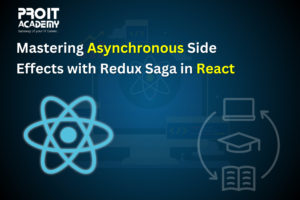Difference between Scala and Python
Big data experts have also recognized the relevance of Spark and Python for standard JVMs. There is also a general discussion about which to use for big-data projects – Scala or Python? The difference between Scala and Python can determine based on efficiency, learning curve, competitiveness, type safety, and Usability.
Depending on the application level or form of the different experts, the final decision may vary. Data experts are fully responsible for choosing the right programming language for projects of Apache Spark, based on practical solutions and language performance.
Both Scala or Python can quickly learn. It makes it possible for developers to become more efficient than Java. In comparison with Python, Scala is often preferred to Apache Spark. For various data specialists, the reasons could be different. Here is a short tour to understand both languages and select the best according to the project’s requirements.
What is Scala?
Scala is the general high-level language of programming that combines object-oriented programming and functional programming. It works with Java Virtual Machine, integrates with Java code and existing libraries.
Many programmers find the Scala code perfect, concise, and readable, making it easy to write, compile, debug and run programs, especially in other languages. Scala developers expand on these ideas by adding Scala static types to help avoid bugs in complex applications. Runtimes from JVM and JavaScript enable you to develop high-performance systems that easily access large library ecosystems.
What is Python?
Python developers are defined as an interpreted high-level, object-oriented, interactive semantic programming language. Its highly optimized data structures and dynamic binding and dynamic typing allow for fast development and use of existing components as a script- or glue language.
Because of its relative ease, programmers like Python offer free support for different packages and modules and their interpreters and basic libraries. This and many other benefits are motivating programmers to learn Python. To master the Python skills check out Python Classes in Pune
What is Apache Spark?
Apache Spark is a unified big data processing engine that is open-source. The main batch processing platform, large-scale SQL, deep learning, and stream processing are considered – all by intuitive, built-in modules.
Spark is a computer-based cluster system for general purposes that performs processing tasks with extensive data sets quickly. It can also share data processing tasks in multiple nodes simultaneously or with other distributed computing tools simultaneously.
Hadoop is the most well-known competitor of Apache Spark, but the latter evolves more rapidly and poses a significant risk to the prominence of the former. Several companies prefer quickness and simplicity with Spark, which supports several APIs in languages like Java, R, Python, and Scala.

Book Your Time-slot for Counselling !
What is Scala Used For?
Scala can be used for anything that Java can do. It is suitable for back-end codes, files, applications, and web design. Programmers also consider that Scala’s smooth integration of object-oriented characteristics and functional languages provides the ideal platform for parallel batch processing, Spark data analysis, AWS Lambda expressions, and REPL ad hoc scripting.
What is Python Used For?
Python is basic and learning syntax quickly, making it an excellent option for creating GUI, web, and web applications. Its focus on readability, especially in maintenance, makes it a cost-efficient choice.
Python is a fantastic machine learning and artificial intelligence framework. Syntax Python resembles the English language, which creates an environment for more comfortable and familiar learning.
Why Learn Scala For Spark?
The main players have been introduced; let’s talk about why Scala for Spark is smart. We’ve seen earlier that Spark has a Scala API (one of many). So why would Scala stand out? Also, there are many Job Oriented Courses to learn Scala or Spark.
Benefits of learning Scala Programming
Spark is written in Scala.
You need to master the original language if you want to get the most from a framework. Scala is the programming language not only of Spark, but it can also use on JVM. Scala allows developers to reach deeper into the source code of Spark and gather access and implement all the latest features of the framework.
Scala is Less Cumbersome and Cluttered than Java
There are 20 to 25 lines of Java code replacing one complex line of Scala code. For big data processors, Scala’s simplicity is essential. The bonus is that Scala and Java are strongly interoperable — Scala developers can also use their Scala code to provide direct access to Java libraries.
Balance
Scala has a reasonable performance-productivity balance. Due to Scala’s simplicity, even Spark developers at the beginning can be quickly brought up to speed. But the lack of complexity by Scala does not diminish the productivity potential it enables.
Scala is Very Popular
Many leading organizations and companies still use Scala or have migrated to it. Scala also has a brighter outlook in many respects. Even major financial institutions and investment banks increasingly migrate to Scala, for instance, and as more people realize how easily scalable it is, they can access low latency solutions.
Parallelism and Concurrency
The design of Scala provides a well-suited environment for these two computing types. Frameworks like Akka, Lift, and Play assist programmers in developing better JVM applications.
Differentiating Scala and Python based on Performance
Scala is ten times quicker than Python since the Java virtual machine is there, and Python is slower in data analysis efficiency and efficient data management. Python initially calls Spark libraries, which require voluminous code processing and slow down Performance.
Scala is also good when the cores are limited. Scala starts to behave strangely, not appreciated by professionals if it increases in count. The concern is Performance-based on core or data processing is to be decided. Data analysis can be considered an important decisive factor for success, and there is no doubt that for big data, Apache Spark projects, Scala provides improved Performance than Python.
Learning Curve
Scala syntax is very complex. However, Python can quickly be learned by syntax and standard libraries. When dealing with Scala data, experts must be cautious. Syntax errors often make you crazy. They are very normal. Libraries are challenging to define and difficult for beginners or new programmers to understand.
Not only syntax but also coding readability are essential for a skilled developer. There are very few Scala developers who can understand the difficult Big Data programming.
Due to the simple syntax and accessibility of Standard libraries, Python can also be quickly learned but cannot be considered as the perfect choice for highly scalable applications such as SoundCloud or Twitter. Learning a complex language like Scala increases the developer’s productivity and improves overall programming.
Differentiating Scala and Python based on Concurrency
Based on the complexities of large data structures, a programming language is quickly needed to integrate various systems or services in databases. Scala has a high choice for many common libraries and core that will help incorporate databases rapidly in the big data ecosystem.
With Scala, developers with many primitive Concurrency can write more effectively, manage, and readable codes. Python does not help Concurrency and multithreading well at the same time. If you use Python for big data projects, only one CPU is active in the python process during the specified time interval.
If you want to execute new code on the system, there is an urgent need to initiate various efficient memory and data processing processes. Python fails here in multithreading and Concurrency, while Scala has proved to manage these workloads in a more effective and straightforward language.
Scala vs. Python based on Type Safety
The developers have to constantly re-facture code for Apache Spark projects. Scala is a static language that provides a compile-time error interface. Scala code refactoring is trouble-free and more straightforward than a language such as Python.
Any time you modify the existing code, the Python language is highly prone to bugs. Scala is often best used where modular code is the main requirement for large data projects. Python is used for small-scale projects but may not provide a scalable feature that may eventually affect the Performance.
Differentiating Scala and Python based on Usability
Scala and Python are equally expressive when it comes to accessibility, and you can obtain the required functionality in large data projects. Python is user-friendly and less verbose than Scala, which simplifies code writing for Python’s Apache Spark Projects by developers. Usability is considered a subjective factor, as what programming language prefers best depends on the programmer’s personal preference.
Advanced Features
Scala has several types of existential, implicit, and macros. The syntax of advanced features may be a bit complicated compared to standard functions. In terms of structure, libraries, implications, macros, respectively, Scala is more effective if we talk about professionals.
In parallel, Scala has not much machine learning or NLP tool. Python is the main choice for national language processing. The discussion concludes that it depends entirely on the project’s design and the programming language you prefer. Python is the perfect option for NLP and machine learning, while streaming, implicit, and macro are perfect for Scala.

Do you need help to create your career path ?
For Big data Apache Spark projects
Performance
Scala is a ten times faster programming language than Python. Scala uses Java Virtual Machine (JVM), which results in a certain speed over Python in most cases. Python is dynamically typed, reducing the speed. The languages compiled are quicker than they are interpreted. Spark libraries are called for Python, which needs a massive amount of code processing and slower Performance. Scala works well in this case for limited cores.
Also, For Hadoop, Scala is native because it is based on JVM. Hadoop is significant because Spark was built on the filesystem top of Hadoop HDFS. Python deals very badly with Hadoop services, so developers have to use libraries of third parties. Scala interfaces with Hadoop via the native Java Hadoop API. That’s why writing native Hadoop applications in Scala is straightforward.
Learning Curve
Both languages are functional and object-oriented, with a standard syntax as well as prosperous supporting communities. Scala can be a little more challenging to understand than Python due to its elevated functional features. Python is better for basic intuitive logic, but for complex workflows, Scala is better. Python has clear syntax and high-quality libraries.
Concurrency
Scala has some basic libraries and core such that databases can quickly integrate into Big Data ecosystems. Scala permits multiple-competitive primitives to write code, while Python does not support competitor or multithreading. Scala allows improved memory and data processing due to its competitive feature. But Python supports the forking of heavyweight processes. Here, only one thread is available at a time. Therefore, as a new code is implemented, additional procedures must restart to maximize the overhead memory.
Usability
We can both be expressive and maintain a high degree of functionality. Python is friendlier and more straightforward to the user. In frameworks, libraries, implicit, macros, etc., Scala is often more efficient. Due to its functionality, Scala fits well in the MapReduce context. Many Scala Data Structures are compatible with Scala API collection in similar abstract data types.
Developers have to learn the primary standard collections so that they get to know other libraries quickly. Spark is written in Scala, and so learning Scala would enable you to understand and change internally what Spark does. Also, several upcoming features will have their APIs first in Scala and Java, and the Python APIs will evolve later. Python is used for NLP since Scala does not have many machine learning resources or NLP. Also, Python is preferred to use GraphX, GraphFrames, and MLLib. Python’s visualization libraries complement Pyspark since there is nothing comparable between Spark and Scala.
Code Restoration and safety
Scala language is statically typed to help one to find compile-time errors. However, Python is a language of dynamic type. Every time you change your existing code, the Python language is very prone to bugs. The code for Scala is, therefore, easier to refactor than to refactor for Python.
Conclusion
Python is slower but extremely easy to use, while Scala is easy and quick to use. As Apache Spark is written in Scala, Scala provides access to Spark’s latest features. The programming preference for Apache Spark is determined by the features that best suit the project requirements because each has its benefits and drawbacks. Python is more analytical when Scala is more technical, but both are great languages for data science. Scala will generally be more beneficial to use Spark’s full potential.












